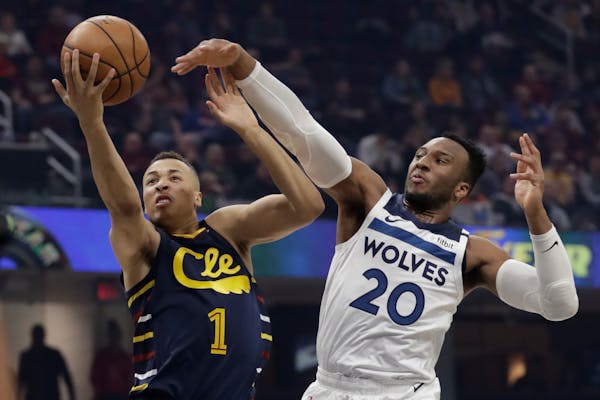Since the beginning of the season, the Timberwolves knew defensive rebounding was going to be a challenge.
They have chosen to play smaller lineups, and when everybody is healthy, Robert Covington, normally a small forward, plays power forward in this modern NBA that prioritizes wings over post players.
When the Wolves defense struggled this season, defensive rebounding took a large share of the blame.
From the start of the season through Dec. 13, which is when the Wolves cranked up their production defensively, the Wolves had the 21st-ranked defensive rebounding percentage (. 725), meaning they grabbed that rate of all available defensive rebounds. Their defensive rating during that time was 22nd (111.4 points per 100 possessions).
But since Karl-Anthony Towns went out because of a left knee sprain, the Wolves have had the best defensive rating in the NBA (101.4). But their defensive rebounding percentage is actually worse (.712, 23rd in the league).
They are succeeding on defense because teams are missing more shots — opponents are hitting just 43 % of shots over the past 12 games, third-best in the league.
The Wolves are thriving defensively despite their inability to get an efficient amount of defensive rebounds. Why is that?
Coach Ryan Saunders has said the Wolves have struggled all season to corral rebounds that go out to the free-throw line and extended area.
"That is going to be something we have to continue to improve," Saunders said. "Our defense can become even better when you look at the analytics and points per possession if we do that. There's plenty of occasions — and I think back to the Milwaukee game, the Memphis game just in the last week — those are two games that we might be feeling different after those games if we get some long rebounds and get some free-throw box-out rebounds."
It's up to the guards and wings in those instances to help with rebounding. But in this heavy volume three-point era, there are going to be more long rebounds that offenses can get to easier. The Wolves know this and it's one of the reasons why they shoot a lot of threes. The Wolves average 14.2 second-chance points per game, fifth in the league. But Saunders said the Wolves have to do a better job of balancing when to crash and when to get back.
"There's room for improvement with that, too," Saunders said. "We've talked a lot about stressing the important of transition defense. We want to be smart with the routes that some of our crashers, as we classify guys that are able to go [to the hoop], some of the routes they take."
The Wolves allow 14.4 second-chance points per game, fifth-worst in the league, and the long rebounds are the main culprit.
"It's like a reaction, but guys are being more conscious of finding bodies, running to the elbows. That way we can get back," Covington said.
The Wolves work on getting to "hot spots" when it comes to tracking misses on threes. Based on where someone takes a shot, the Wolves and other teams can pinpoint where on the floor a rebound is most likely to land.
"On the defensive end, there are similar-type hot spots because it's where the shot is taken," Saunders said. "Especially when [a team] takes a lot of above-the-break threes … usually those above-the-break threes, they're free-throw-line-extended rebounds. That's been, I guess, an Achilles' heel of ours this season."
Chris Hine covers the Timberwolves and the NBA for the Star Tribune.
